
Virtua Tennis 2, known as Tennis 2K2 in North America and Power Smash 2 in Japan, is a sequel to Virtua Tennis that was released for the Sega Dreamcast, Sega NAOMI arcade unit and Sony's PlayStation 2 in 2001–2002. New features included the ability to slice and play as female players such as Monica Seles, Serena Williams, Venus Williams and Lindsay Davenport and the males such as Patrick Rafter, Magnus Norman, Thomas Enqvist and Carlos Moyá and mixed doubles matches. The game was created and produced by Hitmaker, with Acclaim Entertainment publishing it in Europe for the PS2. This was the last Virtua Tennis game to be released for the Dreamcast following its discontinuation.

Heroes of Might and Magic III: The Restoration of Erathia is a turn-based strategy game developed by Jon Van Caneghem through New World Computing originally released for Microsoft Windows by The 3DO Company in 1999. Its ports to several computer and console systems followed in 1999–2000. It is the third installment of the Heroes of Might and Magic series.
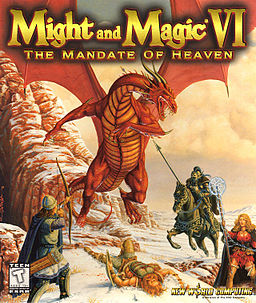
Might and Magic VI: The Mandate of Heaven, commonly abbreviated to Might and Magic VI or simply MM6, is a role-playing video game developed by New World Computing and published by 3DO in 1998. It is the sixth installment in the Might and Magic series, the sequel to Might and Magic V: Darkside of Xeen and the first of the Might and Magic titles to take place on the same planet as Heroes of Might and Magic. It continues the storyline of Heroes of Might and Magic II, and takes place at the same time as Heroes of Might and Magic III in the series chronology. The game was compared favorably to its peers, role-playing video games such as The Elder Scrolls II: Daggerfall. Critics praised it for its non-linear, user-friendly premise, an interactive, detailed game world and a polished, bug-free initial release. A Limited Edition version of the game was also released, including a cloth map of Enroth, a strategy guide and the first five games of the series on CD-ROM. It was followed by three sequels, with Might and Magic VII: For Blood and Honor directly continuing the story arc.

Heroes of Might and Magic IV is a turn-based strategy game developed by Gus Smedstad through New World Computing and published by the 3DO Company for Microsoft Windows-based personal computers in 2002. A Macintosh port was subsequently developed by Contraband Entertainment and released by the 3DO Company. The fourth installment of the popular Heroes of Might and Magic franchise, it is the sequel to Heroes of Might and Magic III, and was the last to be developed by New World Computing.

Might and Magic VIII: Day of the Destroyer is a role-playing video game developed for Microsoft Windows by New World Computing and released in 2000 by The 3DO Company. It is the eighth game in the Might and Magic series. The game received middling critical reviews, a first for the series, with several critics citing the game's length and its increasingly dated game engine, which had been left fundamentally unaltered since Might and Magic VI: The Mandate of Heaven in 1998. The game was later ported to PlayStation 2 in Japan and published by Imagineer on September 6, 2001.

Warriors of Might and Magic is an action role-playing game developed and released by The 3DO Company for the PlayStation and Game Boy Color in 2000, and for PlayStation 2 in 2001. The three versions, although they all follow a similar storyline, are unique, especially the GBC version which is presented in 2D instead of 3D and has an almost completely different story. Each version of the game centers around the protagonist Alleron, who is wrongfully accused of committing necromancy by the Grand Inquisitor, and is exiled as a result. He is forced to wear the Mask of the Accused as a punishment for his crimes, which acts as a magnet to monsters. It is difficult to determine when the events of Warriors of Might take place in the Might and Magic timeline. However, it's speculated that it takes place in between Heroes of Might and Magic III and Heroes of Might and Magic IV.
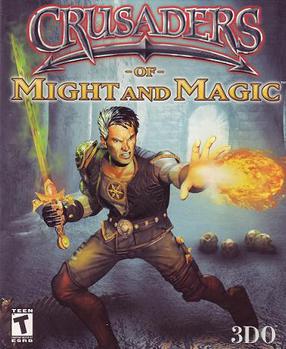
Crusaders of Might and Magic is a third-person action/RPG video game developed and published by 3DO's Austin, Texas studio (PlayStation) and Redwood Shores studio (PC). Different versions of the game were released for both Microsoft Windows and the PlayStation. The protagonist Drake was voiced by veteran voice actor Kevin Conroy.
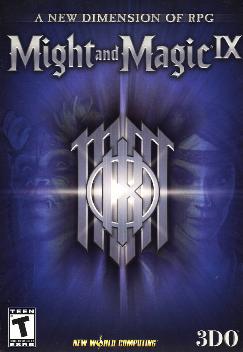
Might and Magic IX is a role-playing video game, the last developed by New World Computing for Microsoft Windows and released in 2002 by The 3DO Company. It is the sequel to Might and Magic VIII: Day of the Destroyer. It is the first to feature a significant game engine overhaul since 1998's Might and Magic VI: The Mandate of Heaven. Powered by the Lithtech 1.5 engine, it was also the first game in the series to feature fully three-dimensional graphics. During production, it was known by the working title of Might and Magic IX: Writ of Fate, and it is usually referred to by that title by fans of the series.
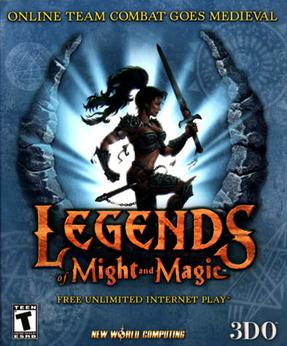
Legends of Might and Magic is a first-person shooter video game developed by Jon Van Caneghem through New World Computing and published by The 3DO Company in 2001. As a spin-off of the Might and Magic franchise, Legends has a fantasy theme. Reviews likened the game to a medieval Counter-Strike, but criticized it for being a mediocre clone.
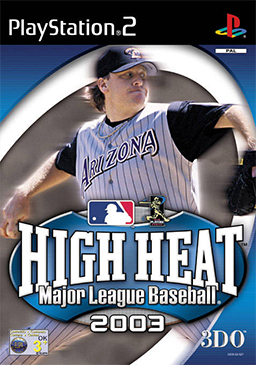
High Heat Major League Baseball 2003 was the second-to-last of a series of baseball computer games, released on PlayStation 2 and Microsoft Windows; a different game of the same name was released for the Game Boy Advance. The game, featuring the official licensed team and player names from all 30 MLB teams, was created by The 3DO Company, who later filed for bankruptcy in May 2003.

Army Men: Sarge's Heroes 2 is a third-person shooter video game developed and published by The 3DO Company for Nintendo 64, Game Boy Color, PlayStation and PlayStation 2. The game is a direct sequel to Army Men: Sarge's Heroes. Unlike the previous game which was more dark in tone, this game has more of a lighthearted storyline.

Top Gun: Combat Zones is a combat flight simulation game named after the 1986 film Top Gun. It was developed by British studio Digital Integration and published by Titus Interactive. It was originally released for the PlayStation 2 in 2001, followed by a GameCube version in 2002. Versions were also released for the Game Boy Advance and Microsoft Windows.

NBA Hoopz is a 2001 basketball video game published by Midway Home Entertainment. It is the sequel to NBA Hangtime and NBA Showtime: NBA on NBC. Hoopz was the only 3-on-3, arcade-style basketball video game available during the 2000–01 NBA season.

Rollcage Stage II is a racing video game developed by Attention to Detail for PlayStation and Microsoft Windows. It is the sequel to Rollcage. On top of the basic racing concept, the cars can be equipped with weapons, which are picked up on the track as bonuses, which can be used against competing cars. The automobiles themselves, once again, have wheels that are larger than the body of the car thus creating a car that has no up or down and therefore can be flipped yet continue to drive. The game was supposed to have been released in the U.S. in early March 2000, but was delayed by over seven months.

High Heat Major League Baseball 2004, also known as High Heat Baseball 2004 or High Heat 2004, is a video game released in 2003, and is the sixth and final game in the High Heat Major League Baseball video game series published by The 3DO Company, before it filed for bankruptcy in May 2003. The game was released on PlayStation 2, Xbox, and Windows. Versions of the game were also intended to launch on Nintendo's Game Boy Advance and GameCube consoles but were scrapped following 3DO's 2003 bankruptcy. Then-Arizona Diamondbacks starting pitcher Curt Schilling is featured on the cover.
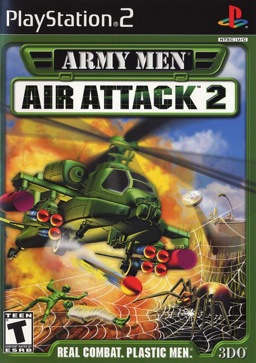
Army Men: Air Attack 2 is a third-person shooter video game developed and published by The 3DO Company for PlayStation, PlayStation 2 and GameCube.
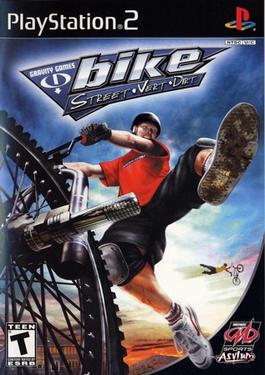
Gravity Games Bike: Street Vert Dirt is a sports video game developed and published by Midway for the PlayStation 2 and Xbox. It was released in North America on June 28, 2002 for the PlayStation 2 and on September 4, 2002 for the Xbox. It was the only game released under the Gravity Games license by Midway.

High Heat Major League Baseball 2002, also known as High Heat Baseball 2002, is a video game released in 2001, and is the fourth game in the High Heat Major League Baseball video game series. Then-Montreal Expos right fielder Vladimir Guerrero is featured on the cover. The game was released in March 2001 for Microsoft Windows, PlayStation, and PlayStation 2, followed by a Game Boy Advance port in September 2001. A Game Boy Color version was also in development but was cancelled.

Army Men: World War - Final Front is a third-person shooter video game developed and published by The 3DO Company exclusively for PlayStation. It is the third installment in the World War subseries.



















